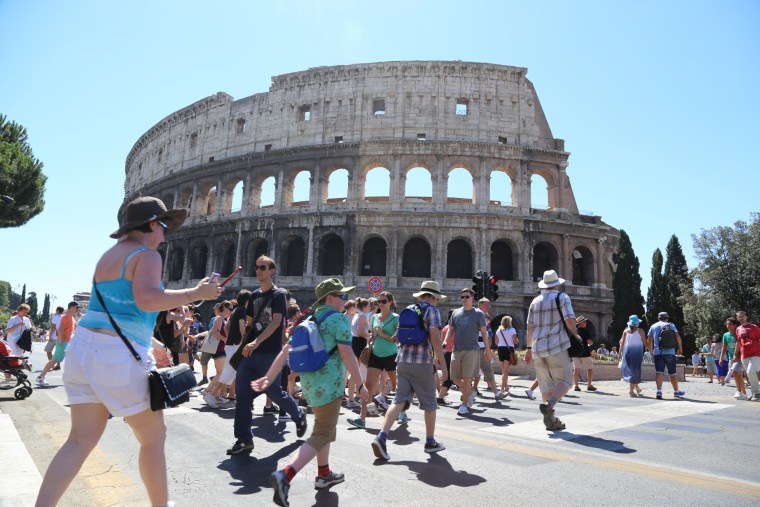ROME -- The Coliseum in Rome was arguably the most beautiful traffic circle in the world. For decades, thousands of cars and vespas zipped around the ancient amphitheater every day. But from Saturday, all that is history.
Exhaust fumes slowly blackened the amphitheater’s once shiny marble, and experts worried the tremors caused by traffic could threaten the fragile monument.
Part of Via dei Fori Imperiali -- the spectacular cobblestone avenue that leads to the Coliseum -- was closed to traffic apart from public transport Saturday and turned into the “most stunningly beautiful boulevard in the world.”
Romans and tourists will finally be able stand in front of the most famous symbol of ancient Rome without fearing they will be run over by impatient motorists -- though some nearby roads are still open.
“Visitors will walk where Julius and Augustus Caesar walked, in the shadows of the Campidoglio Hill and magnificent Coliseum,” Ignazio Marino, the newly elected mayor of Rome, said. “In this location of truly stunning beauty, once more we witness history in the making.”
In a way, Marino has made history of his own.
The pedestrianization of Via dei Fori Imperiali and the Coliseum has been a talking point for decades, but the idea never took off due to the absence of alternative routes for the 1,200 motorists an hour that used it during peak times.
However, Marino turned his election pledge into reality just seven weeks after he took office in June.
“The project came about and has developed thanks to the participation of the men and women of Rome, as a measure which shall enhance quality of life and kindle a new-found love of the city,” Marino boasts on the official project website.
But not all “men and women of Rome” think the pedestrianization will “enhance the quality” of their life.
Hundreds people who live on or around roads that will take the bulk of the diverted traffic oppose the project and blame Marino for throwing them to the lions.
On nearby Via Merulana, an avenue already plagued by heavy traffic, smog and noise pollution, locals shook their heads at the sight of police reducing parking spaces to make room for the expected increase in traffic.
A hundred yards away, city council workers drew an extra lane, turning the already bustling road into a kind of inner-city highway.
Fearful that the fast-moving traffic, lack of parking spaces and the general ensuing chaos would drive clients away, angry shopkeepers and others formed a pressure group to stop, or at least modify, the project.
“This can only end badly for us,” Michele de Angelis, a local newsagent, said. “With fast-moving traffic, nobody is going to be able to stop by, even to buy a newspaper. And traffic will be so bad soon people will simply decide to avoid the area.”
Despite the residents’ fears, Marino plans to press on. He plans to kick out the mobile food carts, illegal vendors and costume-clad wannabe gladiators who turned the amphitheater into a tourist trap.
And next, he dreams of closing down surrounding areas to traffic, including the bustling Piazza Venezia.
Marino also hopes to get money from the European Union to start digging in around the forum to turn it into the “biggest archeological area in the world.”
He may have been mayor of Rome for only seven weeks, but some see a hint of the emperors of old in his ambition and drive.
